With the advent of the Industrial Revolution also came the arrival of fabric woven by machine. But in frontier Alabama at the time of its founding, most Alabama women would have worn homespun fabrics. Practicality would have been the goal rather than looking fashionable. However, according to Ryan Blocker of the Alabama Department of Archives and History, “Even in the ‘wild west’, Alabama women kept up with fashion through fashion plates” which were available. For more affluent women, it was a transitional time in fashion, moving away from the high-waisted Neoclassical style to more elaborate dresses inspired by Romanticism. It is also important to note that all clothing dyes prior to the 1850s were natural; synthetic dyes were invented later.
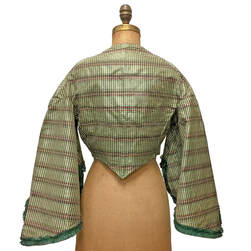 The backside of a silk bodice. Photo | Fashion Archive, University of Alabama
The backside of a silk bodice. Photo | Fashion Archive, University of Alabama The advent of the cage crinoline defined the silhouette of women’s fashion throughout the 1860s. Crinolines were usually made of steel hoops attached by bands of tape, making a dome shape to be worn under a dress, which was more convenient and cooler than layers of petticoats. The crinoline caused women’s skirts to balloon to such an enormous circumference that the result often looked ridiculous. Sacrifices had to be made with the beginning of the Civil War, and southern women often gave up fabrics or cut up clothing to help with the war effort. According to Dr. Marcy Koontz of the Fashion Archive at the University of Alabama, Queen Victoria influenced fashion worldwide as she became known as the “mourning queen” and black was popularized as the color of death and mourning. It would unfortunately been an extremely prevalent color due the widespread death as a result of the Civil War. Trade was also cut off during the war and clothes had to be recycled and repurposed, cut apart and resewn. The advent of the Industrial Revolution also brought young women out of the countryside into the cities for the first time looking for work, and this also impacted women’s fashion.
 The front of a 1920s dress. Photo | Fashion Archive, University of Alabama
The front of a 1920s dress. Photo | Fashion Archive, University of Alabama After the passage of the 19th amendment, which guaranteed women the right to vote, southern women looked forward to the 1920s as a time of independence and excitement. Hemlines got considerably shorter, fabrics more transparent, hair was bobbed short, and women often brazenly smoked in public. Dresses were streamlined, women began wearing trousers, and Jazz music influenced fashion as clothing had to be able to move in order for women to dance to the Charleston. The diminished need for complex and multiple layers of undergarments undoubtedly made the lives of southern ladies more enjoyable as fashion (literally) became cooler. According to Koontz, “You can’t talk about Alabama women without talking about Zelda Fitzgerald—the flapper fashion icon.” A recent exhibition at the Fashion Archives was about 100 years of swimwear and Zelda, arguably the very first flapper, was infamous for wearing a nude-colored swimsuit.
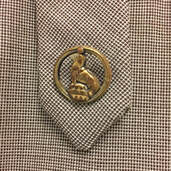 A button on a dress from the 1940s. Photo | Fashion Archive, University of Alabama
A button on a dress from the 1940s. Photo | Fashion Archive, University of Alabama After Pearl Harbor, once again catastrophic war swept the nation and southern women were affected by it. As men enlisted, women were often required to take up the jobs that their husbands, fathers and sons left behind. Fashion was impacted by the overwhelming need to be utilitarian. “Utility clothing” was the order of the day and skirts and jackets were made with a minimum of fuss and waste. According to Koontz, “The 1940s are about innovation because designers had to make do with alternative materials” due to wartime rationing, and the stark fact that globally people were unable to obtain various materials and dyes. Tabs on clothing were inspired by uniforms, but unusual buttons inspired by the fashion designer Elsa Schiaparelli added a touch of whimsy. Despite the necessity for one’s clothing to be practical, women still spruced up their simple attire with pin-curled hair and bright red lipstick. “Alabama women were fashionable women and the war didn’t stop that mindset, and location didn’t hinder [them either]” said Koontz.
Debutante culture and game day attire are two ways that Alabama women express themselves through fashion today. Several debutante balls are still popular culture events in our state, including the Ball of Roses in Birmingham, the Camellia Ball in Mobile, and the Southern Debutante Cotillion in Montgomery. The young ladies making their debuts are expected to wear elaborate dresses that often hearken back to more old-fashioned silhouettes. Alabama women also get to express themselves and their culture through what they wear during football season, which is always a highly anticipated time of year. Through hats, shirts, scarves, umbrellas and jewelry, women can enthusiastically display their team pride and look great doing it. Koontz states that “Alabama women have been particularly known for their love of hats” which protect them from the blazing sun.
Through their fashion, southern women have found an indisputable way to express themselves: their feelings, their sports allegiances, and their identity as a citizen of our state. No matter the material or the color or the occasion, Alabama women are unmistakably themselves and utterly inimitable.
https://www.historynet.com/hemmed-in-conversation-efforts/
https://thefashionarchive.ches.ua.edu/history.html
About the Author

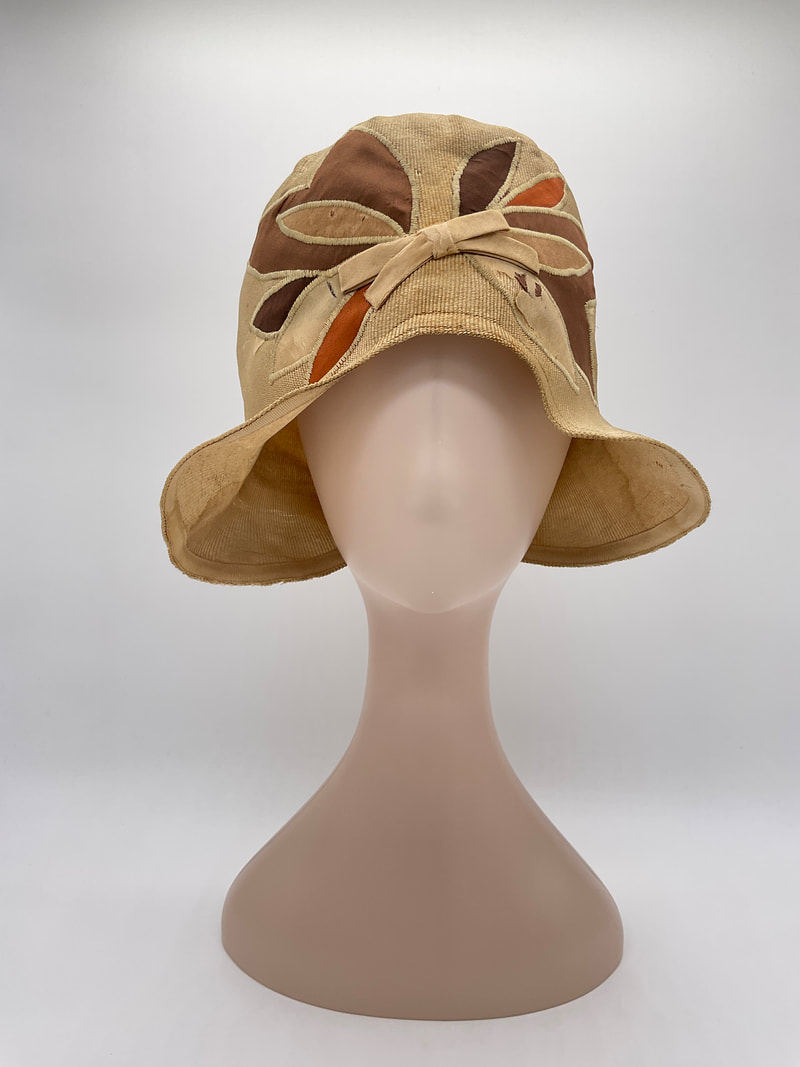
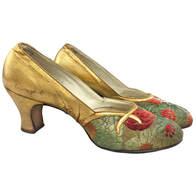
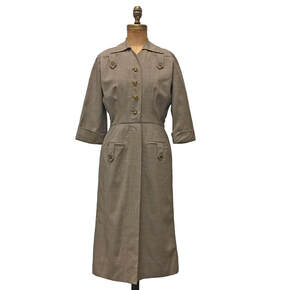
 RSS Feed
RSS Feed